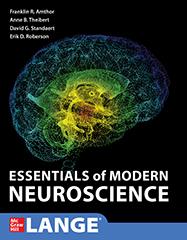Development of the human nervous system involves the generation of the central nervous system (CNS) and peripheral nervous system (PNS) and occurs during embryonic, fetal, and postnatal periods. The study of nervous system development allows a better understanding of the structural organization of the adult nervous system and helps in comprehending the basis of congenital disorders that affect brain function and cause cognitive disorders. Key prenatal stages in neural development include gastrulation, neural induction (NI), neurulation, neurogenesis, gliogenesis, neural migration, and synaptogenesis. Through these prenatal stages, the gross structures of the brain, spinal cord, and nerves are formed; most neuronal and some glial populations are generated; some synapses are formed; and development is governed predominantly by hardwired intrinsic genetic programs that control gene expression and cell–cell interactions. At birth, the mass of the human brain is approximately 350 to 400 g. Postnatally, additional glial cell populations develop, myelination rapidly takes place, dendrites become highly branched, and many more synapses are established. From birth through adolescence, synapses are stabilized and pruned by activity-dependent processes for the construction of neural circuits. This enables experience-driven neuronal activity to influence the wiring of the brain. Postnatally, the human brain nearly quadruples its mass to approximately 1300 to 1400 g in adults.
Errors in development of the nervous system can result from exposure to teratogens or genetic anomalies or mutations, which can produce sensory, motor, behavioral, or cognitive deficits and also make the brain susceptible to disorders that develop in late adolescence or adulthood. A teratogen is defined as a chemical, infectious agent, physical condition, or deficiency that, upon exposure, may cause birth defects or impair future intellectual, behavioral, or emotional functioning via a toxic effect on the developing embryo, fetus, or child. Teratogens include chemical agents such as alcohol, tobacco, environmental toxins, heavy metals, therapeutic drugs and drugs of abuse, infectious agents such as bacteria and viruses, physical injury and emotional stressors, and deficiencies such as malnutrition or hypoxia. The effects of teratogens are determined by the dose or level, timing and duration of exposure, and interactions with genetic factors. The developmental time when a particular organ is most susceptible to teratogenic damage is during the prenatal critical period, usually when morphogenesis, cell proliferation, and cellular differentiation are occurring in that organ (Figure 2–1). The prenatal critical period for brain development is from approximately 2 to 18 weeks (Figure 2–2). However, because the brain continues to develop throughout gestation, postnatally and through young adulthood, exposure to teratogens after the prenatal critical period can also lead to intellectual, emotional, and behavioral disabilities.



